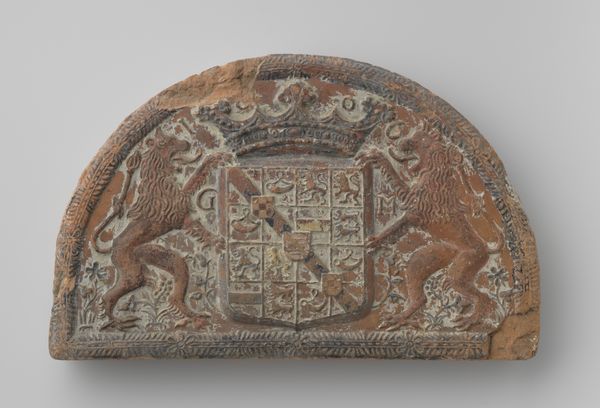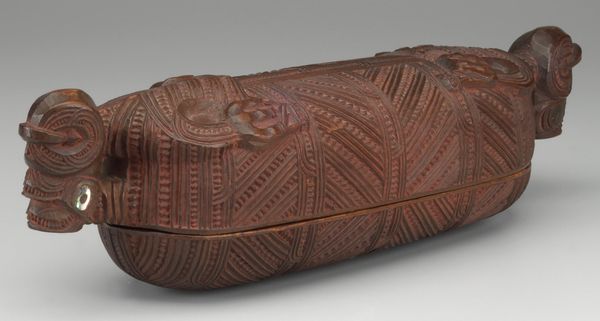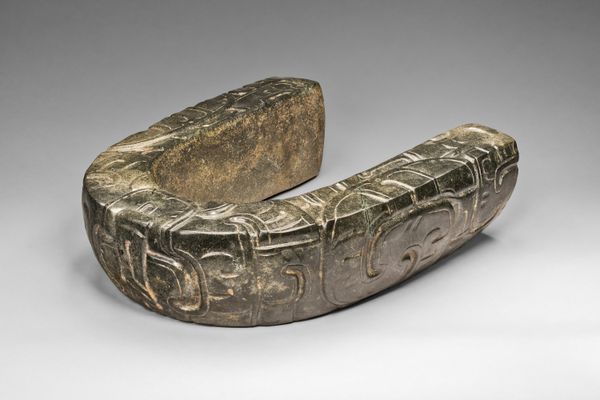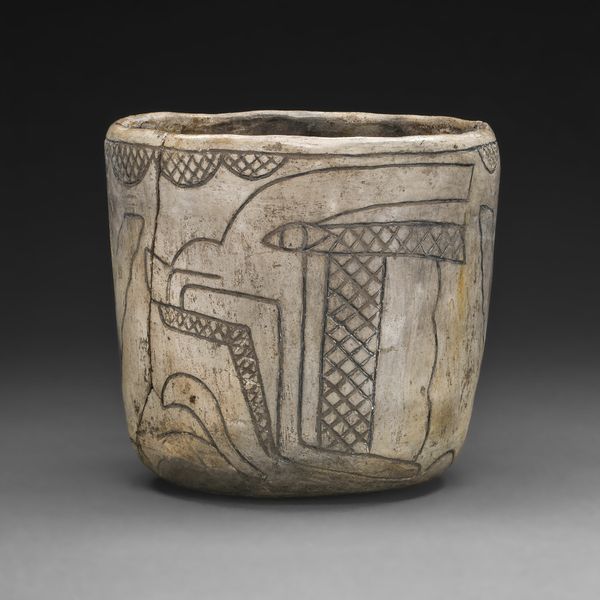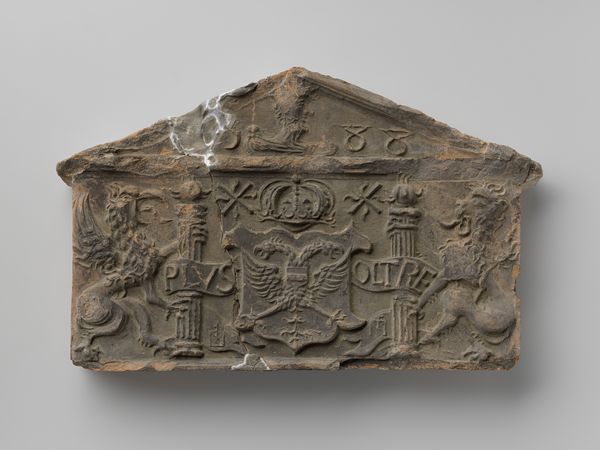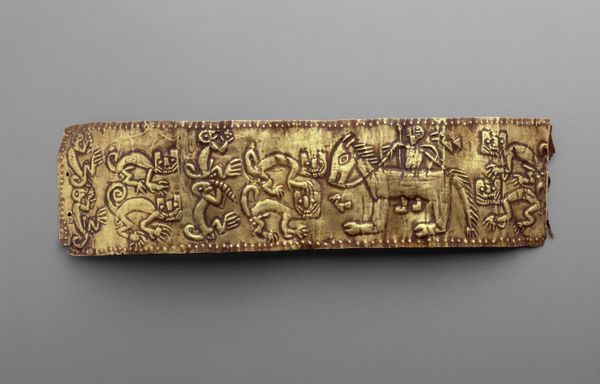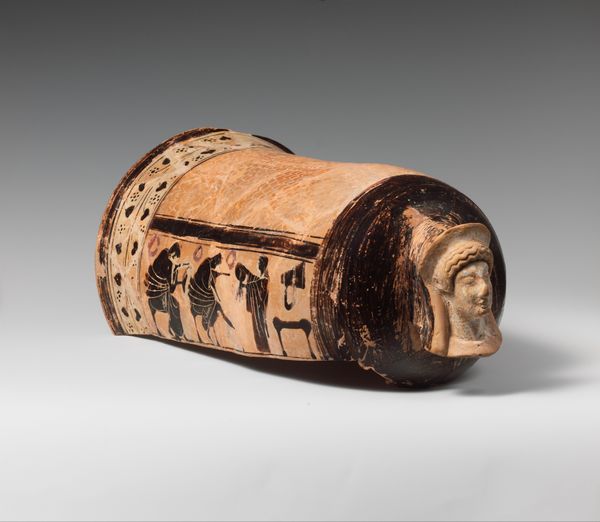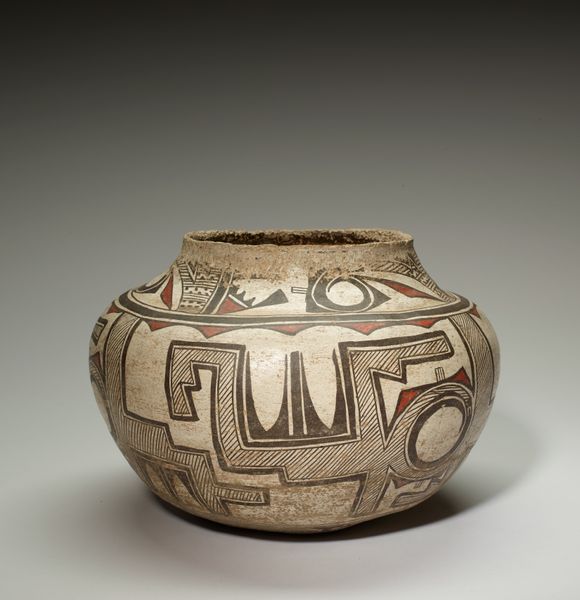
Fragment of a Ceremonial Ballgame Yoke Possibly 700 - 800
0:00
0:00
carving, relief, sculpture
#
carving
#
sculpture
#
detailed texture
#
relief
#
sculptural image
#
figuration
#
sculpture
#
indigenous-americas
Dimensions: 11.43 × 38.6 cm (4 1/2 × 15 1/5 in.)
Copyright: Public Domain
Editor: So, this is a fragment of a Ceremonial Ballgame Yoke, dating potentially from 700 to 800, attributed to Veracruz. It's currently housed at the Art Institute of Chicago, carved out of what looks like a dense stone. It gives off such a solemn and imposing vibe, what is your take on this piece? Curator: Well, understanding this fragment requires looking at the broader social function of the ballgame itself. Think of it as more than just a sport; it was a ritual, deeply embedded in political and religious life. The yoke, worn around the waist of the players, wasn't merely protective gear, it was symbolic armor, connecting the player to cosmic forces. How do you see the imagery contributing to that function? Editor: It does look intricate, almost like the relief is trying to tell a story... or multiple ones. Like, each figure seems important. So, are you suggesting the players became vessels for something else during the game? Curator: Precisely. Consider the museum as a space displaying the conquest. This stone's original placement, as an active object in ceremony, would drastically alter its power, no? The figures represented are not simple decoration; they evoke deities, ancestors, and the very cycles of life and death central to Mesoamerican cosmology. What political statements are displayed when these stones were removed from these sites to be in museums. Editor: So much more than padding. Knowing its political function transforms how I understand the craft of it too. Curator: Exactly, what seemed decorative becomes imbued with powerful and political intentionality when considering the context and culture it once lived within. The ballgame, and by extension objects like this yoke fragment, were central in negotiating social and political power. What we have to ask is, what did it mean, or what did it allow these figures and societies to mean when putting it in the eye of the modern art viewer. Editor: This has definitely altered how I view museum artefacts. Now I see them as loaded signifiers that have power beyond just simple appreciation. Curator: Precisely. These artifacts transcend just aesthetics; they tell a complex story of society, politics, and belief that shaped civilizations.
Comments
No comments
Be the first to comment and join the conversation on the ultimate creative platform.
